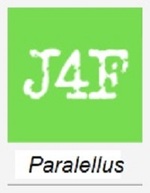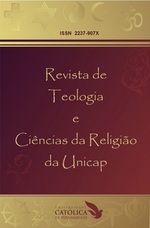PAJÉ, ‘ENCHANTED’ SPIRITS AND PROMISES AMONG THE INDIAN RELIGIOUS PRACTICES UNDERSTANDINGS IN ALAGOAS
DOI:
https://doi.org/10.25247/paralellus.2020.v11n26.p077-096Keywords:
Ancestrality, Indian, ritual, shamanism, AlagoasAbstract
The goal of this article is to display the contradictory feeling between the general understandings between Pajé/Pajelança, directly associated to Shaman/Shamanism. The opposition between these terms were directly obtained by ethnographies experiences among the Indians ethnicities of Alto Sertão Alagoano and among the settled down debates at academics events and other fields that suit other Indians from other places. While it was not possible to find a theoretical study about the problem here presented, both terms, Pajé/Pajelança, Shaman/Shamanism, are mutually placed in their assortment by Anthropology as much as opposites among the Indian peoples of the region. A debate that, theoretically, has been distinguished into its terms and practices by Indians in many fields when the theme is abridged in a general manner, without a usage distinction. Whereas Pajé/Pajelança, Shaman/Shamanism, to the Indians in the territory, are not alike. Therefore, I seek to bring to light the understanding notion of the terms Pajé/Pajelança following the religious insight represented by the promises rituals to the ‘Enchanted’ spirits. Towards these rituals, the pajé’s actions are taken for pajelança. To the Indian ethnicity in Alagoas, these terms are set off as the local ethnicity identity and are particularized into each ethnicity. Perception that goes opposite to the terms Shaman/Shamanism, terminology for universal practices that cannot ‘handle’ the explanation of an inherent ethnicity in the Indians ethnicities in Northeast.Downloads
References
AMORIM, Siloé Sores de. Resistência e Ressurgência indígena no Alto Sertão alagoano. Maceió: Iphan-AL, 2017
BAIRRÂO, José Francisco Miguel Henriques. Raízes da Jurema. Psicol. USP, São Paulo, v. 14, n. 1, p. 157-184, 2003. Disponível em: http://www.scielo.br/scielo.php?script=sci_arttext&pid=S0103-65642003000100009&lng=en&nrm=iso. Acesso em 24 Nov. 2019.
CAILLÉ, Alain. Antropologia do Dom: o Terceiro Paradigma. Petrópolis, RJ: vozes, 2002.
EVANS-PRITCHARD, Evan. Bruxaria, oráculos e magia entre os Azande; edição resumida e introdução, Eva Gillies; tradução Eduardo Viveiros de Castro. Rio de Janeiro: Jorge Zahar Ed., 2005.
FUNDAÇÃO GETULIO VARGAS. Dicionário de Ciências Sociais. Rio de Janeiro, Editora da Fundação Getúlio Vargas, 1987, p. 1058.
GEERTZ, Clifford. A interpretação das culturas. Rio de Janeiro: LTC, 2008.
LEWIS Jonh. Antropologia simplificada. Tradución del inglês, 1969, p. 94-96.
LOWIE, Robert H. Indians of the Plains. American Museum of Natural History, Anthropological Handbook n. 1 New York: McGraw-Hill, 1954.
MARCEL, Mauss. Sociologia e Antropologia. São Paulo: Cosac Naify, 2003.
OLIVEIRA, João Pacheco de (org). A viagem de volta: etnicidade, política e reelaboração cultural no Nordeste indígena. Rio de Janeiro: Contra Capa, 2004.
L’OMI L’ODÒ, Alexandre. A Jurema Sagrada – Resiliente religião de matriz indígena do Nordeste do Brasil. In: Revista Senso, Edição 11/ junho / julho / 2019. Disponível em: https://revistasenso.com.br/2019/06/28/editorial-11a-edicao-juremasagrada/. Acesso em, 04 de nov. de 2019.
TURNER, Victor. Profesiones Religiosas: Estudios Sociológico. Enciclopedia Internacional de las Ciencias Sociales, vol. 8, Madrid, 1978, p. 547-552.
Downloads
Published
Issue
Section
License
A submissão de originais para a Paralellus implica a transferência, pelos autores, dos direitos de publicação eletrônica. Os direitos autorais para os artigos veiculados neste periódico são do autor; todavia, são da revista os direitos sobre a primeira publicação. Os autores somente poderão fazer uso dos mesmos resultados em outras publicações se indicarem, claramente, que a Paralellus foi o meio originalmente utilizado. Em decorrência do fato de ser a Paralellus uma revista de acesso público, é permitida a utilização gratuita dos artigos em aplicações educacionais e/ou científicas não comerciais, desde que respeitando-se a exigência de citação da fonte (Texto atualizado em 16-11-2020).

















